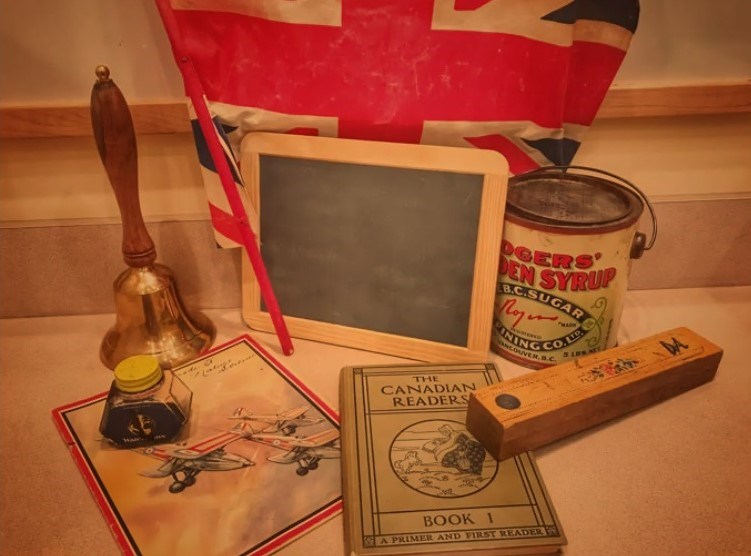Saskatchewan’s pioneer children faced unique challenges when they attended school during the 1880s to early 1900s, challenges that the Western Development Museum (WDM) highlighted during a recent presentation.
“School Days” was the focus of the WDM’s recent virtual Coffee Club. Karla Rasmussen, education and public relations program co-ordinator in Moose Jaw, focused on the experiences of rural schoolchildren in one-room schoolhouses.
“This one was really fun to look for pictures for when I was going through the research and updating one of our older scripts … ,” she said.
There were no school buses that could transport children, so families relied on alternative methods of travel, such as an “omnibus,” a type of wagon that horses pulled throughout the year, she explained. Meanwhile, in the winter, students travelled in an enclosed horse-pulled homemade caboose that was “all nice and toasty warm inside.”
Many children walked to school since they lived on the farm, while others travelled on horseback. Some students rode with an older sibling if they were too young, she continued. Those who rode on horses or rode in wagons had to look after the animals during the school day.
“They had to be unhitched from their buggies and sheltered from the weather. Sometimes there would be a barn on the school grounds for the horses to stay in,” added Rasmussen. “The students would give them food at recess and at noon.”
On many school grounds, there were small homes called teacherages so the teacher could live close by. If no such buildings existed, the educators would board with a family during the school year.
School books and lunches were the main items students carried each day. However, since there were no backpacks, the youths relied on metal lunch buckets for their food and a book strap to loop around their homework.
Satchel side packs were introduced in the 1940s, making it easier for students to carry their items to school.
At many schools, older students were responsible for raising and lowering the Union Jack flag. This was the then-official flag of Canada since the country was still a dominion or colony under Great Britain.
Teachers used handbells to announce when school started in the morning. Students lined up, with boys in one group and girls in another. They then walked inside to hang up their clothing before sitting at their wooden desks.
In a one-room schoolhouse, this meant up to 45 students from grades 1 to 8 were in the same room. Some of the older students helped their younger counterparts, while many lessons were completed as a group, said Rasmussen. Students also sang together God Save The King and The Lord’s Prayer.
In the late 1890s and early 1900s, students used a slate and a squeaky chalk pencil to write and answer math equations.
“The slates were not cheap and could easily be broken. One lady has told us that when she was a little girl, she dropped her slate, and it broke into many pieces. Her parents were not happy with her. They could not afford to buy her another one for quite a while,” Rasmussen recalled.
Meanwhile, some desks had inkwells, which allowed students to write with stick pens. However, youths had to be careful not to splash others since the ink did not wash out.
Indoor plumbing did not exist in rural schoolhouses, so everyone had to use a nearby outhouse, which could be cold in the winter, Rasmussen continued. A lack of plumbing also meant students drank from a makeshift water fountain, with water coming from either a nearby well or students bringing water in a pail.
“If a school did not have a fountain like this, they would simply have a pail of water and a dipper, which looks like a large soup ladle … ,” she said. “I think we all got the willies there thinking about where we are in the pandemic, so probably a good thing we don’t do that the same way anymore.”
Many schools lacked playground equipment, but there were sometimes homemade swings or see-saws. Other times, students played games such as jacks, a hanky doll, skipping rope, tag, marbles or baseball.
Other favourite games, Rasmussen added, included Cat and Mouse, Duck Duck Goose, leapfrog, and Simon Says.
The next Coffee Club is on Tuesday, Nov. 30 and focuses on the British Commonwealth Air Training Plan in the Second World War.




